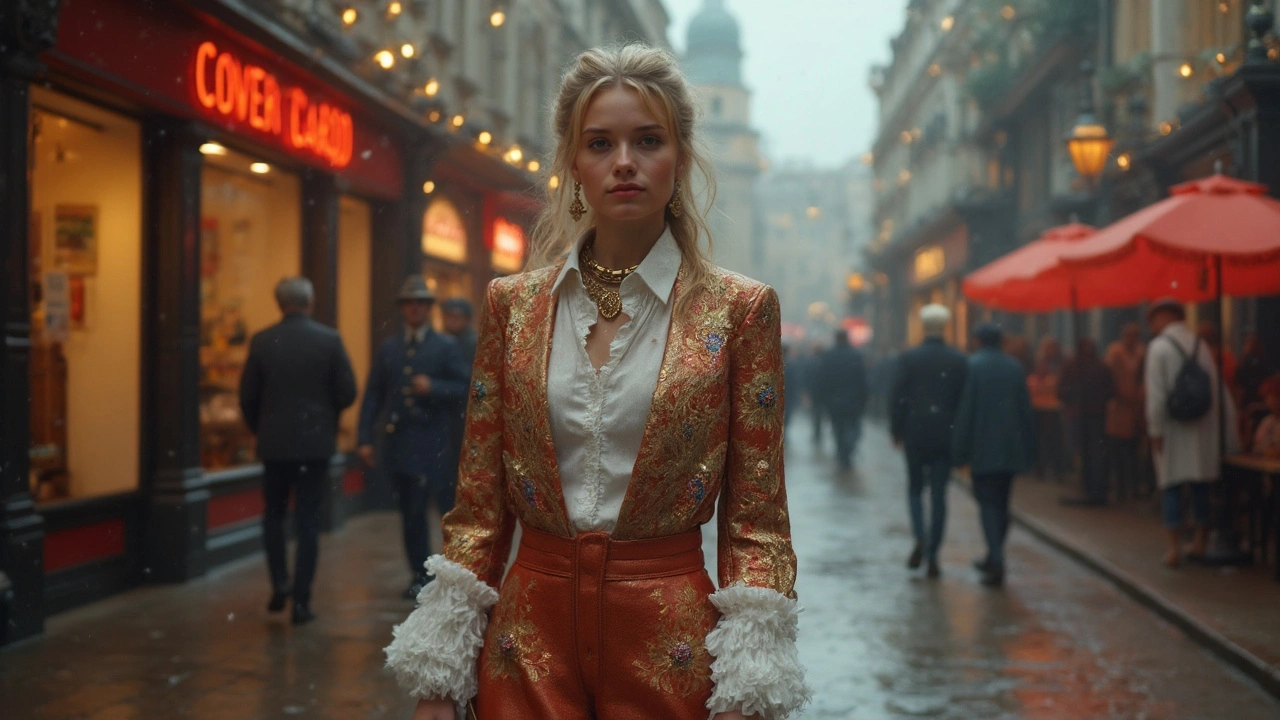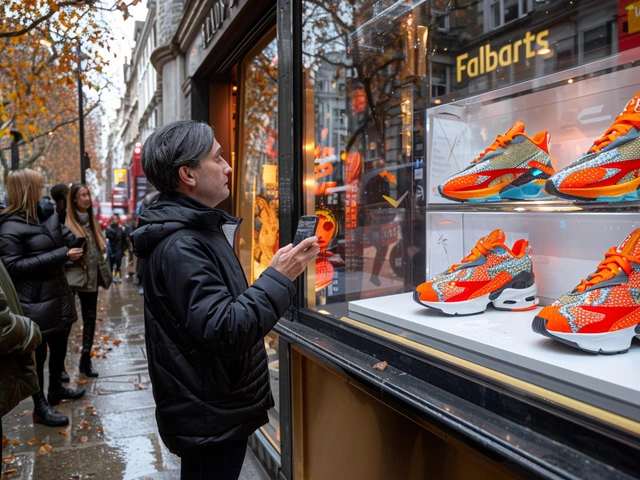Baroque style isn’t just about dramatic art in old churches or gold-trimmed furniture from centuries ago. It’s bold, colorful, and surprisingly edgy—especially when you see how folks today are picking it up and giving it their own spin. If you scroll through social media, you’ll spot hints of Baroque everywhere: in statement home decor, funky fashion choices, and even music videos that don’t shy away from going big and bold.
So, why bother with Baroque in the age of AI and smart everything? The simple answer: people crave personality. Baroque instantly adds character to spaces and outfits without making things feel dated. You don’t need to buy a velvet throne. Even adding one heavy-framed mirror or a swirl-patterned cushion can take a regular room from boring to full of life. The same goes for music—sampling a Baroque melody can make a pop song stand out without sounding stuffy.
- What Made Baroque Special in the First Place?
- Blending Baroque with Modern Life
- Easy Ways to Add Baroque Flair at Home
- Modern Music and the Baroque Comeback
What Made Baroque Special in the First Place?
The baroque style kicked off in early 1600s Europe, shaking up everything from architecture and painting to music and furniture. It’s not just the gold and drama that made the baroque age stand out; it’s how over-the-top and attention-grabbing everything was. Artists and designers wanted their work to make you stop and stare, and honestly, it worked.
Baroque reflected the wild times in Europe, where kings and the church wanted to flex their power. Cathedrals and palaces popped up with massive pillars, huge domes, and crazy-detailed ceilings. Paintings by Caravaggio or Rubens exploded with action and bright color. People didn’t go for gentle; they went full throttle.
That approach ran through music too. Names like Bach and Vivaldi made pieces with wild highs and lows—think pounding organs, fiddles going full-speed, and choirs that rattled the walls. In fact, Bach’s music even used some pretty intense math to keep everything balanced and catchy, and scientists have found that his compositions still spark more brain activity than nearly any other genre.
If you’re a stats kind of person, just look at how wild baroque's influence got:
| Baroque Area | Notable Example | Century of Influence |
|---|---|---|
| Architecture | St. Peter’s Basilica, Rome | 17th |
| Painting | The Night Watch by Rembrandt | 17th |
| Music | Four Seasons by Vivaldi | 18th |
The basics? Baroque is big, loud, and never shy. That’s why it’s so easy to spot even today—and why people keep coming back for more when they want to break away from the boring and bland.
Blending Baroque with Modern Life
You’d think a style born in the 1600s would clash with today’s minimalist craze, but Baroque actually fits right in if you cherry-pick the right elements. These days, designers pull dramatic details—like curved shapes, big patterns, or gold accents—and stick them onto clean, simple backgrounds. It’s not about having a house that looks like a museum; it’s more about adding splashes of fancy where they stand out most.
To see this in action, major fashion brands like Dolce & Gabbana and Versace have used Baroque prints in their latest lines. Even IKEA dropped a "Lövbacken" table with super-curvy legs in its vintage collection, proving Baroque curves can work with flat-pack modern furniture. On Instagram, searches for #baroqueinterior doubled in the last three years as people mix oversized mirrors and bold wallpapers with plain walls and floors.
| Baroque Element | Modern Use | Example |
|---|---|---|
| Gold accents | Home accessories | Picture frames, side tables |
| Curved shapes | Furniture design | Couches, table legs |
| Bold patterns | Wallpaper or textiles | Accent walls, throw pillows |
| Ornate mirrors | Room highlights | Living room, entryways |
There’s no need to go overboard. Take one or two Baroque details, and blend them with basic, modern stuff. For example:
- Hang a gold-trimmed mirror on a plain, neutral wall.
- Add a dramatic chandelier to your dining area.
- Throw a few patterned cushions on a basic sofa.
This approach keeps Baroque from feeling out of place and instead makes any space or outfit memorable. If you want quick impact, just focus on one item—a bold mirror or a curvy coffee table works wonders. Even in music, pop artists like Lana Del Rey have sneakily used baroque-style strings and harpsichords under their tracks, showing that these old-school details never really went out of style—they just needed a clever update.

Easy Ways to Add Baroque Flair at Home
Getting that Baroque vibe at home doesn’t mean you have to hunt down antiques or cover your walls in gold leaf. It’s about picking the right touches that bring that bold, detailed look without turning your place into a museum.
Let’s start with the basics. Baroque design is all about drama—think curved shapes, rich colors, and a bit of shine. Here’s how you can work it in, even if you rent or have a smaller space:
- Baroque-style mirrors: These usually have chunky, ornate frames. You can find lookalikes at home stores or even second-hand online for under $100. Just one big mirror can make a room instantly feel more dramatic and spacious.
- Textile swaps: Don’t want to deal with new furniture? Pillows or curtains with rich patterns (like damask or brocade) do the trick. Deep blues, reds, or golds will nail the look.
- Wall art: Printing out a high-res scan of a famous Baroque painting works wonders. Pop it in a thrifted frame. No need for the real thing.
- Accent lighting: A small vintage-look lamp or a faux crystal chandelier will make your room feel special without a lot of fuss.
- Details matter: Swirled candleholders, gold handles on cabinets, or even decorative trays can bring in that Baroque energy super fast.
Curious what’s most popular? Here’s a quick look at the top Baroque-inspired home items people buy these days:
| Item | Average Cost (USD) | Popularity (2024 Rank) |
|---|---|---|
| Ornate Wall Mirrors | $80 - $350 | #1 |
| Brocade Throw Pillows | $20 - $60 | #2 |
| Gold Candle Holders | $15 - $40 | #3 |
| Baroque Art Prints | $18 - $45 | #4 |
| Vintage-Inspired Lamps | $30 - $120 | #5 |
If you really want to go all-out, some people paint a wall a dark green or navy to let those gold frames and vivid fabrics really stand out. But honestly, starting small with one or two pieces can already change the whole feel of a room. The trick is not to overdo it—let those standout Baroque pieces shine on their own.
Modern Music and the Baroque Comeback
If you think Baroque is just for stuffy concert halls, check your playlist again. Modern artists keep turning to Baroque for inspiration—from the wild string sections in indie tracks to pop stars remixing classics by Bach or Vivaldi. In fact, when Lady Gaga dropped “Alejandro” back in 2010, critics pointed out the bassline sounded straight from a 1600s ballroom. Even in hip-hop and EDM, you’ll hear producers sneaking in harpsichord samples and dramatic builds that wouldn’t be out of place in a royal palace.
Streaming platforms show that classical crossover is catching on—Spotify’s Classical Crossover playlist, for example, racked up millions of plays last year alone. Some big-name films and TV series (think Bridgerton’s string covers of modern pop) have boosted this trend too. The point? Baroque is everywhere, only now it’s got a strong modern twist.
- Composer Max Richter’s 2012 album “Recomposed: Vivaldi – The Four Seasons” kept the original vibe but filtered it through electronic beats, topping classical charts for weeks.
- Bands like Clean Bandit fuse violin and cello hooks right into electronic dance tracks, proving that baroque sounds still move crowds today.
- Producers use digital tools to chop up old masterpieces and build catchy loops for rap and pop songs—you can find Bach’s influence tucked away in beats by Kanye West and The Fugees.
Why does it work? People want that epic, almost cinematic feel you get from Baroque, but just updated. That’s why more music schools offer classes in “baroque pop” or “classical fusion”—students want to mix genres, not box themselves in. Even TikTok musicians play with Baroque, laying old arpeggios over trap beats to go viral!
| Modern Baroque-influenced Album | Artist/Group | Year Released | Notable Baroque Element |
|---|---|---|---|
| “Recomposed: Vivaldi – The Four Seasons” | Max Richter | 2012 | Vivaldi melodies reimagined with synths |
| “New Eyes” | Clean Bandit | 2014 | Cello and violin in dance/pop songs |
| “Bridgerton Soundtrack, Season 1” | Various Artists | 2020 | String covers of modern hits |
Want to get into the Baroque trend yourself? Try remixing a famous Baroque piece. Tons of royalty-free MIDI files are out there—great for experimenting with beats and old-school harmonies. Or just throw some harpsichord on your next track and see how it instantly changes the vibe. Sometimes a little twist from centuries ago is just what your music needs to stand out now.




